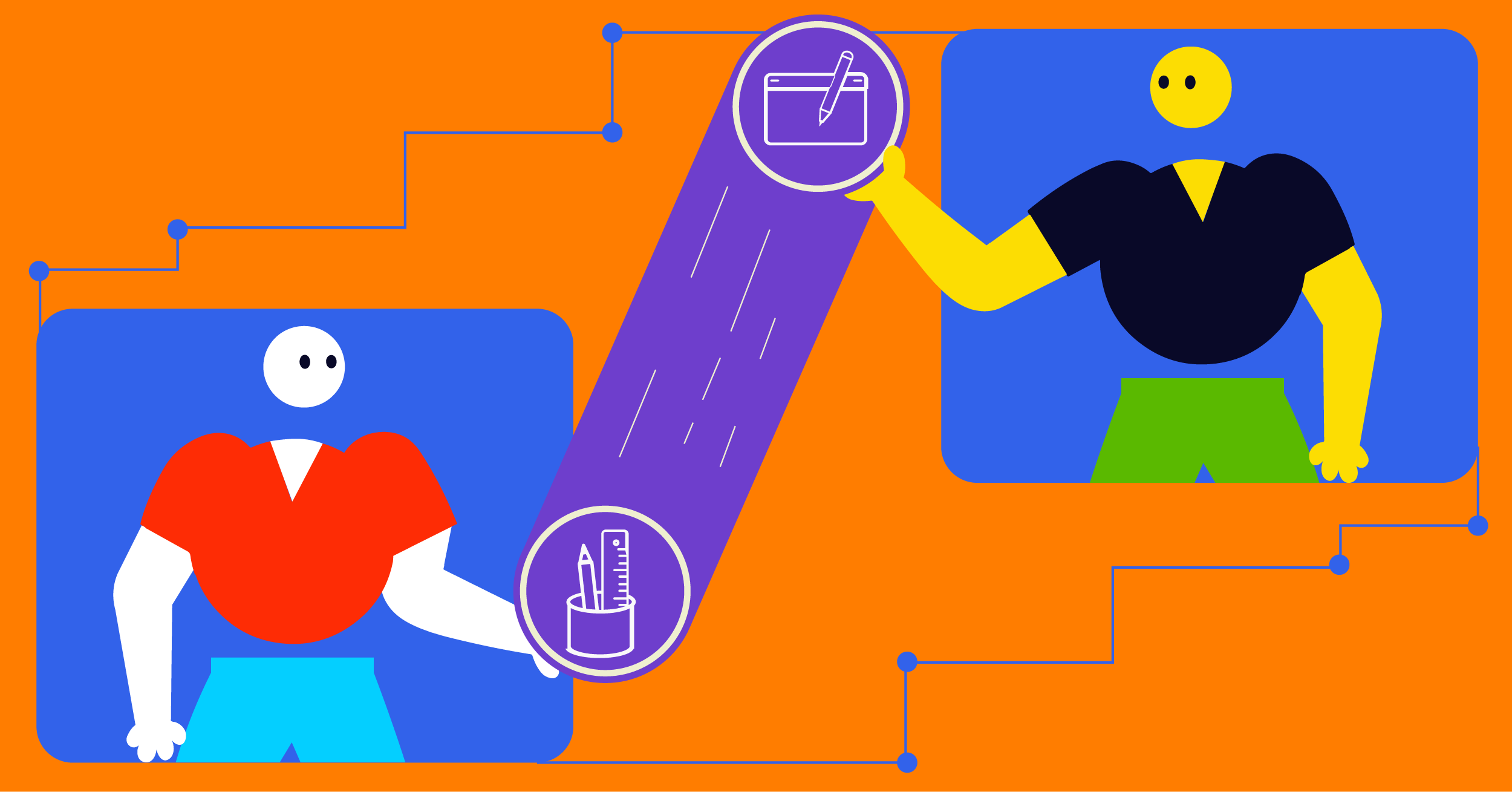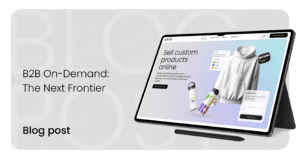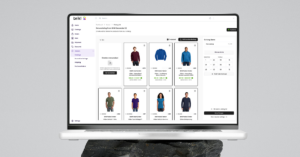A few weeks into the Coronavirus crisis and the world experiences one of the biggest recession of the last hundred years. Budget freezes put hustling freelance creatives on the backfoot. Many creative endeavours are deemed a luxury rather than a necessity by businesses all around the world and put on ice, and finding stability in a period of uncertainty becomes a trending topic worldwide.
So the big question is, when facing this and future economic downturns, how exactly can you thrive as a product designer during a recession?

-Mar-31-2022-09-04-51-88-AM.gif) If you’re a product designer that sees the potential in Brikl’s technology, it’s probably because you see the platform not just as another piece of software, but as an opportunity to free yourself from the manual time sinks that cost you and your company time, resources and money every year. From setting up team stores to conceptualizing your designs for presentations to manually actioning feedback, what took hours could take minutes with Brikl.
Time, resources and money can then be channelled back into the business to demonstrate ROI and develop the long-term growth plans of the business, safeguarding it against the blows of the next recession. You can even use these critical savings as a way of offering customers discounts, offers and promotions to work some flexibility into your pricing and create an air of economic sensitivity and understanding around your brand.
If you’re a product designer that sees the potential in Brikl’s technology, it’s probably because you see the platform not just as another piece of software, but as an opportunity to free yourself from the manual time sinks that cost you and your company time, resources and money every year. From setting up team stores to conceptualizing your designs for presentations to manually actioning feedback, what took hours could take minutes with Brikl.
Time, resources and money can then be channelled back into the business to demonstrate ROI and develop the long-term growth plans of the business, safeguarding it against the blows of the next recession. You can even use these critical savings as a way of offering customers discounts, offers and promotions to work some flexibility into your pricing and create an air of economic sensitivity and understanding around your brand.
-Mar-31-2022-09-04-48-71-AM-1.gif) Everybody is affected when there’s a recession, which is why it’s so important to allow all departments to have access to a single source of truth. Empowering external stakeholders – such as coaches and sales representatives – is also crucial for building trust and ensuring that they can easily access the data they need to be an ambassador and collaborate effectively with your business.
Brikl’s admin portal has been designed to facilitate this. Whether you’re a coach, a CEO or a sales representatives, you can use the admin portal to see how well your team store or microsite is converting when your store is open and active. You can control the level of admin access you grant others, and through their permissions, your admins can keep track of how many orders have been created, how much you have sold in total, how much has been raised for charity, and what individual products you have sold, at-a-glance.
This is a huge time-saving for custom and promotional businesses, offering an alternative to calling merchants to request reports and avoiding report generation and continuous, often chaotic, conversation.
Everybody is affected when there’s a recession, which is why it’s so important to allow all departments to have access to a single source of truth. Empowering external stakeholders – such as coaches and sales representatives – is also crucial for building trust and ensuring that they can easily access the data they need to be an ambassador and collaborate effectively with your business.
Brikl’s admin portal has been designed to facilitate this. Whether you’re a coach, a CEO or a sales representatives, you can use the admin portal to see how well your team store or microsite is converting when your store is open and active. You can control the level of admin access you grant others, and through their permissions, your admins can keep track of how many orders have been created, how much you have sold in total, how much has been raised for charity, and what individual products you have sold, at-a-glance.
This is a huge time-saving for custom and promotional businesses, offering an alternative to calling merchants to request reports and avoiding report generation and continuous, often chaotic, conversation.
 Product designers are visual problem solvers and communicators with an end goal to make a recognizable, reputable and unique product. In a volatile market, being able to showcase your work in 3D is a must: it helps stakeholders, customers and clients better envision your product, streamlines operations to create a more resilient business and allows you to work and innovate at speed.
Find out more on how we can help you work and innovate in a way that makes you and your ideas indispensable to your business. We also offer a free trial after every walkthrough so you can discover and demonstrate the future-proofing power of the platform to your business.
For more tips, information and content from Brikl, keep reading.
Product designers are visual problem solvers and communicators with an end goal to make a recognizable, reputable and unique product. In a volatile market, being able to showcase your work in 3D is a must: it helps stakeholders, customers and clients better envision your product, streamlines operations to create a more resilient business and allows you to work and innovate at speed.
Find out more on how we can help you work and innovate in a way that makes you and your ideas indispensable to your business. We also offer a free trial after every walkthrough so you can discover and demonstrate the future-proofing power of the platform to your business.
For more tips, information and content from Brikl, keep reading.
The design industry is a vital one, acting as a conduit and architect to a business’ ideas. Designers draw upon innovation to create products that people need, with a wider focus on societal concerns: from eco-consciousness to affordability. That’s why, when an economic recession lights a fire under a company, it’s business-critical to stand out from the competition with a unique product.
-Mar-31-2022-09-05-00-54-AM.gif)
Try something new
You don’t need to reinvent the wheel to recession-proof yourself as a product designer. But you do need the agility to pivot quickly and learn new skills and tools that can help you or your company generate more business. This can be as much about your development process as it is about your product.- Do you spend a lot of time turning flat product sketches into 3D designs?
- How consistent and streamlined is your marketing?
- Could the money you save on internal resources be reallocated into growing your business?
- How can communication serve as an axis for safeguarding customer, stakeholder and employee expectation?
Turn 2D designs into 3D with ease
Brikl allows you to convert a 2D design into a beautiful 3D rendering with just a single click using its 3D visualization technology. Your 3D renderings can be exported as GIF files or PNG images and you can also copy an online preview link and share your designs with anyone involved in the approvals process. Customers and stakeholders now have the option of rotating your designs, submitting their feedback directly and signing off your designs straight from the platform. Not only is this a more innovative, engaging and collaborative way to work, it greatly streamlines the design and communication process. This alone has the capacity to save product designers hundreds of hours of year.
- You don’t need coding skills. Simply drag and drop a design template into Brikl’s Design Studio. Review the 2D UV map and the 3D model side-by-side.
- Use Brikl’s 3D visualization software with the design software package of your choice e.g., Adobe Illustrator or CorelDraw.
- Export your designs in vector format from your design software package and drag-and-drop it into Brikl to see the 3D rendering.
- Create designs with ease and greater visual feedback using the interactive 3D model. Rotate it to view the product from all angles. Zoom in on it to see the details, including textures, seaming, stitching and more.
- Keep track of the changes you make by saving different versions, which you can then share online with others.
- You can click on the “Generate Preview” link to create a URL that you can share via email with your customers. Customers can open the link in a browser window and interact with the 3D model.
Embrace 3D designs and customization strategies in your marketing
Designs that you create in Illustrator can be uploaded into Brikl’s Studio Editor which in turn allows your clients, stakeholders and customers customizability options they’ll love. They can then effortlessly add colors, prints, images and text and share their designs with their network, amplifying awareness around your brand and product. You can also generate an embed link and add this to your website, blog or online portfolio. With an embed link, users can interact with your 3D images.Save time, resources and money
-Mar-31-2022-09-04-51-88-AM.gif) If you’re a product designer that sees the potential in Brikl’s technology, it’s probably because you see the platform not just as another piece of software, but as an opportunity to free yourself from the manual time sinks that cost you and your company time, resources and money every year. From setting up team stores to conceptualizing your designs for presentations to manually actioning feedback, what took hours could take minutes with Brikl.
Time, resources and money can then be channelled back into the business to demonstrate ROI and develop the long-term growth plans of the business, safeguarding it against the blows of the next recession. You can even use these critical savings as a way of offering customers discounts, offers and promotions to work some flexibility into your pricing and create an air of economic sensitivity and understanding around your brand.
If you’re a product designer that sees the potential in Brikl’s technology, it’s probably because you see the platform not just as another piece of software, but as an opportunity to free yourself from the manual time sinks that cost you and your company time, resources and money every year. From setting up team stores to conceptualizing your designs for presentations to manually actioning feedback, what took hours could take minutes with Brikl.
Time, resources and money can then be channelled back into the business to demonstrate ROI and develop the long-term growth plans of the business, safeguarding it against the blows of the next recession. You can even use these critical savings as a way of offering customers discounts, offers and promotions to work some flexibility into your pricing and create an air of economic sensitivity and understanding around your brand.
Communicate better, create better
-Mar-31-2022-09-04-48-71-AM-1.gif) Everybody is affected when there’s a recession, which is why it’s so important to allow all departments to have access to a single source of truth. Empowering external stakeholders – such as coaches and sales representatives – is also crucial for building trust and ensuring that they can easily access the data they need to be an ambassador and collaborate effectively with your business.
Brikl’s admin portal has been designed to facilitate this. Whether you’re a coach, a CEO or a sales representatives, you can use the admin portal to see how well your team store or microsite is converting when your store is open and active. You can control the level of admin access you grant others, and through their permissions, your admins can keep track of how many orders have been created, how much you have sold in total, how much has been raised for charity, and what individual products you have sold, at-a-glance.
This is a huge time-saving for custom and promotional businesses, offering an alternative to calling merchants to request reports and avoiding report generation and continuous, often chaotic, conversation.
Everybody is affected when there’s a recession, which is why it’s so important to allow all departments to have access to a single source of truth. Empowering external stakeholders – such as coaches and sales representatives – is also crucial for building trust and ensuring that they can easily access the data they need to be an ambassador and collaborate effectively with your business.
Brikl’s admin portal has been designed to facilitate this. Whether you’re a coach, a CEO or a sales representatives, you can use the admin portal to see how well your team store or microsite is converting when your store is open and active. You can control the level of admin access you grant others, and through their permissions, your admins can keep track of how many orders have been created, how much you have sold in total, how much has been raised for charity, and what individual products you have sold, at-a-glance.
This is a huge time-saving for custom and promotional businesses, offering an alternative to calling merchants to request reports and avoiding report generation and continuous, often chaotic, conversation.
We understand you. And your process
 Product designers are visual problem solvers and communicators with an end goal to make a recognizable, reputable and unique product. In a volatile market, being able to showcase your work in 3D is a must: it helps stakeholders, customers and clients better envision your product, streamlines operations to create a more resilient business and allows you to work and innovate at speed.
Find out more on how we can help you work and innovate in a way that makes you and your ideas indispensable to your business. We also offer a free trial after every walkthrough so you can discover and demonstrate the future-proofing power of the platform to your business.
For more tips, information and content from Brikl, keep reading.
Product designers are visual problem solvers and communicators with an end goal to make a recognizable, reputable and unique product. In a volatile market, being able to showcase your work in 3D is a must: it helps stakeholders, customers and clients better envision your product, streamlines operations to create a more resilient business and allows you to work and innovate at speed.
Find out more on how we can help you work and innovate in a way that makes you and your ideas indispensable to your business. We also offer a free trial after every walkthrough so you can discover and demonstrate the future-proofing power of the platform to your business.
For more tips, information and content from Brikl, keep reading.





